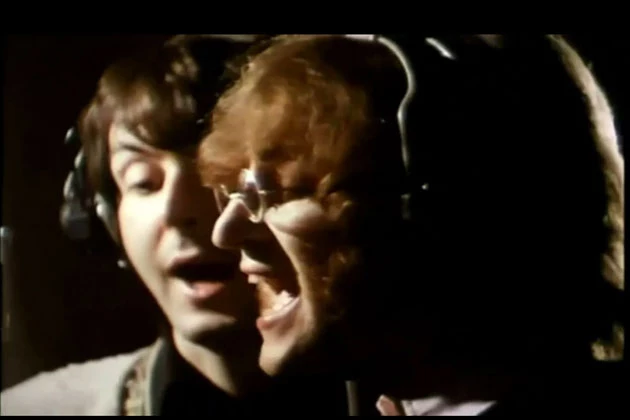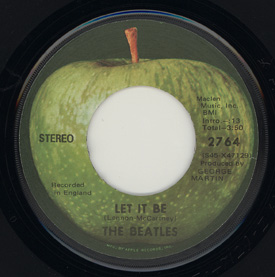A week in the life
Business lessons from rock
March 11, 2015

As a Beatles get-a-lifer, I like to check in on what the Fabs were doing at a given point in time (as I mentioned in a previous post) and see if there are lessons to apply. After all, this small business team was one of the most commercially successful artistic enterprises in history.
During the week of March 9 to March 15 here’s what the Liverpool lads were up to in different years—and what it meant.
1958: The band who would later become the Beatles—the Quarry Men (including John Lennon, Paul McCartney, and George Harrison)—performed in a small basement club in Liverpool that was seedy enough to be closed by police a month later. A valuable reminder that The Beatles not only had been playing gigs for SIX YEARS before they became world famous in 1964, but they played in some of the most rat-infested cellar clubs in northern Britain in that period. Hashtag: not an overnight success. (Not a prima donna band either.)
1961: The Beatles performed at the tiny Cavern Club (a small subterranean Liverpool dive that had become their home base of operation) several times this week. On two of the days they played three gigs at three different venues! While on stage they would eat, drink, and smoke—and even curse at the audience. This was not show-business-as-usual. Here was an insolent working class band, belting out raunchy rock & roll at high volume, wherever and whenever they could. Exuberance and defiance was their calling card.
1962: The Beatles were still performing at the Cavern Club this week, as well as the Casbah Coffee Club (another cellar nightclub, located in the home of their drummer Pete Best), along with a jazz club and a church hall. They were slowly beginning to clean up their act, under the watchful tutelage of new manager Brian Epstein, who with his theatrical background made sure they tended to the social niceties, while retaining their individualistic flair. The structural tension between their desire to please the masses (for commercial purposes) yet maintain their iconoclastic impertinence (for artistic purposes) became part of their enduring appeal.
1963: The Fabs were on tour with Chris Montez (“Let’s Dance”) and Tommy Roe (“Sheila,” “Dizzy”) this week, but John Lennon was a scratch for three days because a bad cold had ravaged his throat (aggravated no doubt by excessive gigging and singing). But they managed to fly down to London and back one morning so that Lennon could record a harmonica overdub on “Thank You, Girl.” By now Brian Epstein was pushing them harder than they had ever worked, but they complied because he had signed onto their vision of "being bigger than Elvis."
1964: At this point in time Beatles’ singles provided 60% of sales of singles in the US. (Let THAT one sink in.) “I Want to Hold Your Hand” was still #1 after seven consecutive weeks at the top of the charts, soon to be replaced at the top by “She Loves You.” They already OWNED the pop charts and were now exploring new territory: they were on location shooting A Hard Day’s Night, which would turn out to be another game changer (as discussed here). Grass did not grow under their feet.
1965: The band was in the Bahamas working on their second film, Help! Meanwhile “8 Days a Week” had just hit #1 in the US—not a big deal in itself, because nearly every Beatles' single made it to #1. But this song was essentially a throwaway tune (at least in John’s estimation), demonstrating that the lads could polish a pig. Their vocal and instrumental arrangements were so strong they could turn mediocre songs into decent records. The multidimensionality of their talent served them well.

1966: The Beatles were on vacation this week, but they would soon begin working on their breakthrough album, Revolver.
1967: The band was in the studio recording their future masterpiece, Sgt Pepper’s. This week they received Grammys for the previous year: Best Song (”Michelle”), Best Vocal Performance (“Eleanor Rigby”), and Best Album Cover (“Revolver”). Note that the band was breaking new ground even in album artwork.

1968: The Beatles shot one of the first music videos this week—a promotional film for “Lady Madonna.” They also won four Grammys for Sgt Pepper’s: Best Album, Best Contemporary Album, Best Album Cover, and Best Engineered Recording. Now their engineering and production work—not just their songwriting or vocal/instrumental arrangements—was recognized for being best in class. Their innovative drive seemed limitless.

1969: The band was mixing down their Let It Be album, which, once it was eventually released 14 months later, would be their last hurrah. Inter-band disagreements were becoming louder and more frequent during these recording sessions. (Producer George Martin who had helped harness their artistic conflict in previous recordings was not working these sessions, and manager Brian Epstein who had kept them in line in years past had died in 1967.) The creative abrasion that served them so well could no longer be contained.
1970: The single “Let it Be” was released, with a silly ditty on the B side, “You Know My Name (Look Up My Number)”—demonstrating their ability to sell anything to the public, given their years of success.

Ok, what have we learned? To keep it simple, two things:
1. The Beatles were action-oriented and results-obsessed. This team lived on the road and worked their butts off for years long before (and after) they became world famous. They finally stopped touring in late 1966, nine years after they began, though they continued to record for three more years. Their ambition and resilience knew no bounds. Burnout was never an issue, given their passion for their work and their eye on the prize. Not bad qualities for a team in any business.
2. Their off-the-charts creativity kept them on the charts for eight years straight (and intermittently in the decades since). They continually pushed the envelope, beginning in song craft (musical and lyrical), extending to engineering and production, and then to album artwork and packaging. They would even become fashion trendsetters and lead a generation into consciousness exploration, whether through psychedelic drugs or meditation. As Newsweek said twenty years ago, “What the Beatles did in the '60s remains the most thrilling surge of creativity in the history of pop culture.” A mania for innovation is also not a bad thing in any business.
Thanks to the archives of Macca Central for the above information.

No hay comentarios:
Publicar un comentario